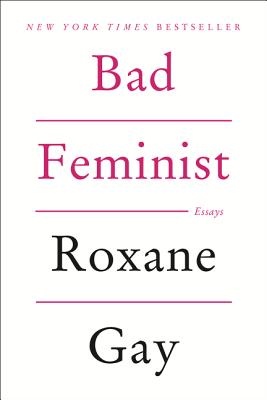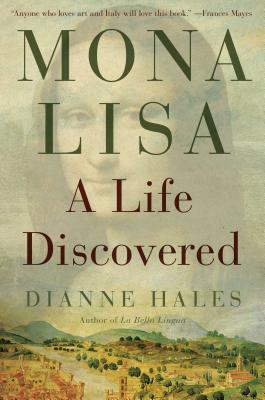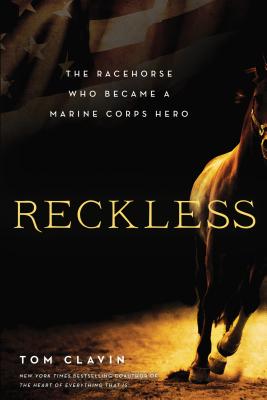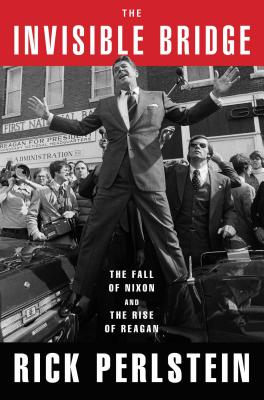A collection of essays spanning politics, criticism, and feminism from one of the most-watched young cultural observers of her generation, Roxane Gay.
“Pink is my favorite color. I used to say my favorite color was black to be cool, but it is pink—all shades of pink. If I have an accessory, it is probably pink. I read Vogue, and I’m not doing it ironically, though it might seem that way. I once live-tweeted the September issue.”
In these funny and insightful essays, Roxane Gay takes us through the journey of her evolution as a woman (Sweet Valley High) of color (The Help) while also taking readers on a ride through culture of the last few years (Girls, Django in Chains) and commenting on the state of feminism today (abortion, Chris Brown). The portrait that emerges is not only one of an incredibly insightful woman continually growing to understand herself and our society, but also one of our culture.
Bad Feminist is a sharp, funny, and spot-on look at the ways in which the culture we consume becomes who we are, and an inspiring call-to-arms of all the ways we still need to do better.
David Attenborough meets Lemony Snicket in The Big Bad Book of Botany, Michael Largo's entertaining and enlightening one-of-a-kind compendium of the world's most amazing and bizarre plants, their history, and their lore.
The Big, Bad Book of Botany introduces a world of wild, wonderful, and weird plants. Some are so rare, they were once more valuable than gold. Some found in ancient mythology hold magical abilities, including the power to turn a person to stone. Others have been used by assassins to kill kings, and sorcerers to revive the dead. Here, too, is vegetation with astonishing properties to cure and heal, many of which have long since been lost with the advent of modern medicine.
Organized alphabetically, The Big, Bad Book of Botany combines the latest in biological information with bizarre facts about the plant kingdom's oddest members, including a species that is more poisonous than a cobra and a prehistoric plant that actually "walked." Largo takes you through the history of vegetables and fruits and their astonishing agricultural evolution. Throughout, he reveals a astonishing facts, from where the world's first tree grew to whether plants are telepathic.
Featuring more than 150 photographs and illustrations, The Big, Bad Book of Botany is a fascinating, fun A-to-Z encyclopedia for all ages that will transform the way we look at the natural world.
Everybody knows her smile, but no one knows her story: Meet the flesh-and-blood woman who became one of the most famous artistic subjects of all time--Mona Lisa.
A genius immortalized her. A French king paid a fortune for her. An emperor coveted her. Every year more than 9 million visitors trek to view her portrait in the Louvre.Yet while everyone recognizes her smile, hardly anyone knows her story. Mona Lisa: A Life Discovered, a blend of biography, history, and memoir, truly is a book of discovery--about the world's most recognized face, most revered artist, and most praised and parodied painting. Who was she, this ordinary woman who rose to such extraordinary fame? Why did the most renowned painter of her time choose her as his model? What became of her? And why does her smile enchant us still?
Lisa Gherardini (1479-1542) was a quintessential woman of her times, caught in a whirl of political upheavals, family dramas, and public scandals. Her life spanned the most tumultuous chapters in the history of Florence--and of the greatest artistic outpouring the world has ever seen. Her story creates an extraordinary tapestry of Renaissance Florence, with larger-than-legend figures such as Leonardo da Vinci, Michelangelo, and Machiavelli.
Dianne Hales, author of La Bella Lingua,"became obsessed with finding the real Mona Lisa on repeated trips to Florence. In Mona Lisa: A Life Discovered, she takes readers with her to meet Lisa's descendants; uncover her family's long and colorful history; and explore the neighborhoods where she lived as a girl, a wife, and a mother. In the process, we can participate in Lisa's daily rituals; understand her personal relationships; and see, hear, smell, and taste "her" Florence. Hales brings to life a time poised between the medieval and the modern, a vibrant city bursting into fullest bloom, and a culture that redefined the possibilities of man--and of woman.
From the racetracks of Seoul to the battlegrounds of the Korean War, Reckless was a horse whose strength, tenacity, and relentless spirit made her a hero amongst a regiment of U.S. Marines fighting for their lives on the front lines.
Her Korean name was Ah-Chim-Hai—Flame-of-the-Morning. A four-year-old chestnut-colored Mongolian racehorse with a white blaze down her face and three white stockings, she once amazed the crowds in Seoul with her remarkable speed. But when war shut down the tracks, the star racer was soon sold to an American Marine and trained to carry heavy loads of artillery shells up and down steep hills under a barrage of bullets and bombs. The Marines renamed her Reckless.
Reckless soon proved fearless under fire, boldly marching alone through the fiery gauntlet, exposed to explosions and shrapnel. For months, her drive and determination kept the Marines’ guns blazing, while inspiring them with her singular charm. During one day of battle alone, she made fifty-one trips up and down a crucial hill, covering at least thirty-five miles in the heat of combat. On some of her uphill treks, Reckless shielded human reinforcements. The Chinese, soon discovering the unique bravery of this magnificent animal, made a special effort to kill her. But Reckless never slowed. As months passed and the enemy grew bolder, the men came to appreciate her not just as a horse but as a weapon, and eventually, as a fellow Marine.
In Reckless, Tom Clavin, New York Times bestselling coauthor of The Heart of Everything That Is, tells the unlikely story of a racehorse who truly became a war hero, beloved by the Marine Corps and decorated for bravery. A moving reminder of the unbreakable bond between people and animals, Reckless is a powerful tale of courage, survival, and even love in the face of overwhelming odds.
From the bestselling author of Nixonland a dazzling portrait of America on the verge of a nervous breakdown in the tumultuous political and economic times of the 1970s.
In January of 1973 Richard Nixon announced the end of the Vietnam War and prepared for a triumphant second term--until televised Watergate hearings revealed his White House as little better than a mafia den. The next president declared upon Nixon's resignation "our long national nightmare is over"--but then congressional investigators exposed the CIA for assassinating foreign leaders. The collapse of the South Vietnamese government rendered moot the sacrifice of some 58,000 American lives. The economy was in tatters. And as Americans began thinking about their nation in a new way--as one more nation among nations, no more providential than any other--the pundits declared that from now on successful politicians would be the ones who honored this chastened new national mood.
Ronald Reagan never got the message. Which was why, when he announced his intention to challenge President Ford for the 1976 Republican nomination, those same pundits dismissed him--until, amazingly, it started to look like he just might "win." He was inventing the new conservative political culture we know now, in which a vision of patriotism rooted in a sense of American limits was derailed in America's Bicentennial year by the rise of the smiling politician from Hollywood. Against a backdrop of melodramas from the Arab oil embargo to Patty Hearst to the near-bankruptcy of America's greatest city, The Invisible Bridge asks the question: what does it mean to" "believe in America? To wave a flag--or to reject the glibness of the flag wavers?
“Pink is my favorite color. I used to say my favorite color was black to be cool, but it is pink—all shades of pink. If I have an accessory, it is probably pink. I read Vogue, and I’m not doing it ironically, though it might seem that way. I once live-tweeted the September issue.”
In these funny and insightful essays, Roxane Gay takes us through the journey of her evolution as a woman (Sweet Valley High) of color (The Help) while also taking readers on a ride through culture of the last few years (Girls, Django in Chains) and commenting on the state of feminism today (abortion, Chris Brown). The portrait that emerges is not only one of an incredibly insightful woman continually growing to understand herself and our society, but also one of our culture.
Bad Feminist is a sharp, funny, and spot-on look at the ways in which the culture we consume becomes who we are, and an inspiring call-to-arms of all the ways we still need to do better.
David Attenborough meets Lemony Snicket in The Big Bad Book of Botany, Michael Largo's entertaining and enlightening one-of-a-kind compendium of the world's most amazing and bizarre plants, their history, and their lore.
The Big, Bad Book of Botany introduces a world of wild, wonderful, and weird plants. Some are so rare, they were once more valuable than gold. Some found in ancient mythology hold magical abilities, including the power to turn a person to stone. Others have been used by assassins to kill kings, and sorcerers to revive the dead. Here, too, is vegetation with astonishing properties to cure and heal, many of which have long since been lost with the advent of modern medicine.
Organized alphabetically, The Big, Bad Book of Botany combines the latest in biological information with bizarre facts about the plant kingdom's oddest members, including a species that is more poisonous than a cobra and a prehistoric plant that actually "walked." Largo takes you through the history of vegetables and fruits and their astonishing agricultural evolution. Throughout, he reveals a astonishing facts, from where the world's first tree grew to whether plants are telepathic.
Featuring more than 150 photographs and illustrations, The Big, Bad Book of Botany is a fascinating, fun A-to-Z encyclopedia for all ages that will transform the way we look at the natural world.
Everybody knows her smile, but no one knows her story: Meet the flesh-and-blood woman who became one of the most famous artistic subjects of all time--Mona Lisa.
A genius immortalized her. A French king paid a fortune for her. An emperor coveted her. Every year more than 9 million visitors trek to view her portrait in the Louvre.Yet while everyone recognizes her smile, hardly anyone knows her story. Mona Lisa: A Life Discovered, a blend of biography, history, and memoir, truly is a book of discovery--about the world's most recognized face, most revered artist, and most praised and parodied painting. Who was she, this ordinary woman who rose to such extraordinary fame? Why did the most renowned painter of her time choose her as his model? What became of her? And why does her smile enchant us still?
Lisa Gherardini (1479-1542) was a quintessential woman of her times, caught in a whirl of political upheavals, family dramas, and public scandals. Her life spanned the most tumultuous chapters in the history of Florence--and of the greatest artistic outpouring the world has ever seen. Her story creates an extraordinary tapestry of Renaissance Florence, with larger-than-legend figures such as Leonardo da Vinci, Michelangelo, and Machiavelli.
Dianne Hales, author of La Bella Lingua,"became obsessed with finding the real Mona Lisa on repeated trips to Florence. In Mona Lisa: A Life Discovered, she takes readers with her to meet Lisa's descendants; uncover her family's long and colorful history; and explore the neighborhoods where she lived as a girl, a wife, and a mother. In the process, we can participate in Lisa's daily rituals; understand her personal relationships; and see, hear, smell, and taste "her" Florence. Hales brings to life a time poised between the medieval and the modern, a vibrant city bursting into fullest bloom, and a culture that redefined the possibilities of man--and of woman.
From the racetracks of Seoul to the battlegrounds of the Korean War, Reckless was a horse whose strength, tenacity, and relentless spirit made her a hero amongst a regiment of U.S. Marines fighting for their lives on the front lines.
Her Korean name was Ah-Chim-Hai—Flame-of-the-Morning. A four-year-old chestnut-colored Mongolian racehorse with a white blaze down her face and three white stockings, she once amazed the crowds in Seoul with her remarkable speed. But when war shut down the tracks, the star racer was soon sold to an American Marine and trained to carry heavy loads of artillery shells up and down steep hills under a barrage of bullets and bombs. The Marines renamed her Reckless.
Reckless soon proved fearless under fire, boldly marching alone through the fiery gauntlet, exposed to explosions and shrapnel. For months, her drive and determination kept the Marines’ guns blazing, while inspiring them with her singular charm. During one day of battle alone, she made fifty-one trips up and down a crucial hill, covering at least thirty-five miles in the heat of combat. On some of her uphill treks, Reckless shielded human reinforcements. The Chinese, soon discovering the unique bravery of this magnificent animal, made a special effort to kill her. But Reckless never slowed. As months passed and the enemy grew bolder, the men came to appreciate her not just as a horse but as a weapon, and eventually, as a fellow Marine.
In Reckless, Tom Clavin, New York Times bestselling coauthor of The Heart of Everything That Is, tells the unlikely story of a racehorse who truly became a war hero, beloved by the Marine Corps and decorated for bravery. A moving reminder of the unbreakable bond between people and animals, Reckless is a powerful tale of courage, survival, and even love in the face of overwhelming odds.
From the bestselling author of Nixonland a dazzling portrait of America on the verge of a nervous breakdown in the tumultuous political and economic times of the 1970s.
In January of 1973 Richard Nixon announced the end of the Vietnam War and prepared for a triumphant second term--until televised Watergate hearings revealed his White House as little better than a mafia den. The next president declared upon Nixon's resignation "our long national nightmare is over"--but then congressional investigators exposed the CIA for assassinating foreign leaders. The collapse of the South Vietnamese government rendered moot the sacrifice of some 58,000 American lives. The economy was in tatters. And as Americans began thinking about their nation in a new way--as one more nation among nations, no more providential than any other--the pundits declared that from now on successful politicians would be the ones who honored this chastened new national mood.
Ronald Reagan never got the message. Which was why, when he announced his intention to challenge President Ford for the 1976 Republican nomination, those same pundits dismissed him--until, amazingly, it started to look like he just might "win." He was inventing the new conservative political culture we know now, in which a vision of patriotism rooted in a sense of American limits was derailed in America's Bicentennial year by the rise of the smiling politician from Hollywood. Against a backdrop of melodramas from the Arab oil embargo to Patty Hearst to the near-bankruptcy of America's greatest city, The Invisible Bridge asks the question: what does it mean to" "believe in America? To wave a flag--or to reject the glibness of the flag wavers?





No comments:
Post a Comment